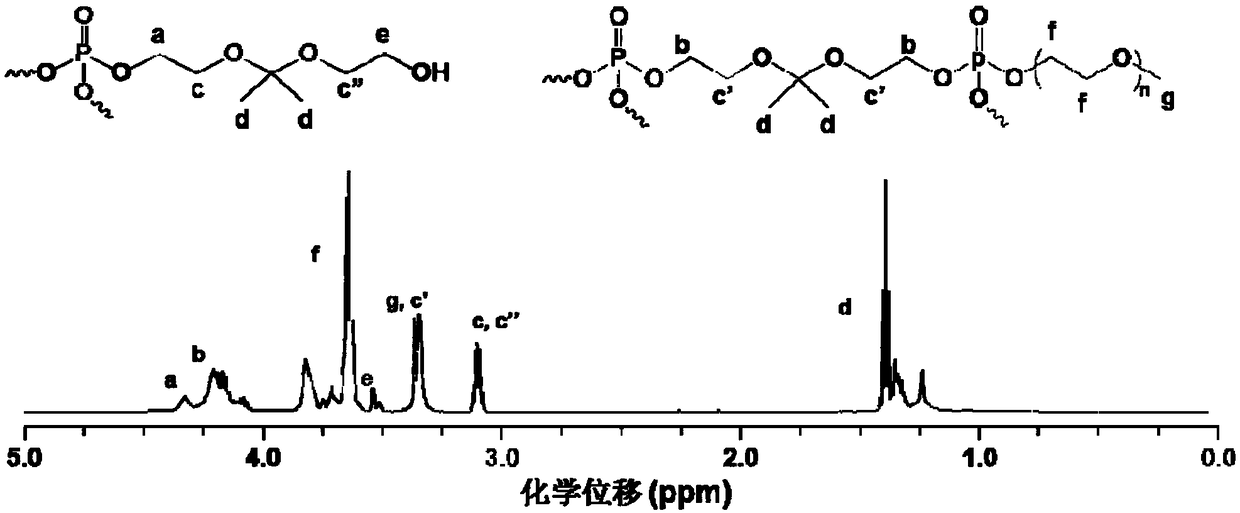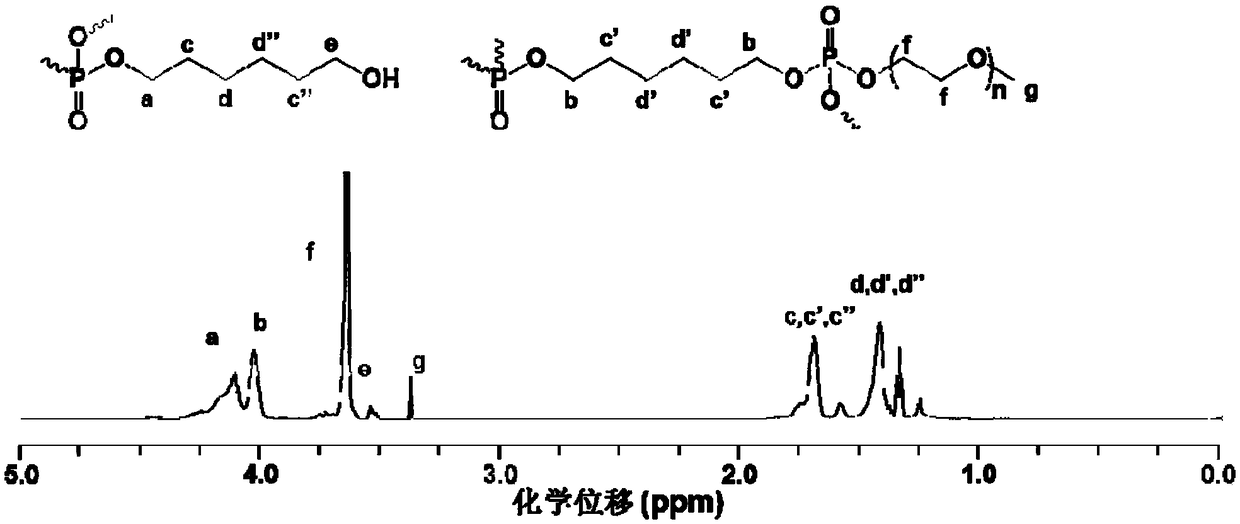HPPE (hyperbranched polyphosphate ester) material of acetal bond skeleton as well as preparation method and application of HPPE material
A polyphosphate and acetal bond technology, which is applied to medical preparations without active ingredients, wave energy or particle radiation treatment materials, and medical preparations containing active ingredients, etc. It can achieve good biocompatibility and degradability, great potential for clinical application, and improve the efficacy of PDT.
- Summary
- Abstract
- Description
- Claims
- Application Information
AI Technical Summary
Problems solved by technology
Method used
Image
Examples
Embodiment 1
[0047] Embodiment 1, the synthesis and characterization of hyperbranched polyphosphate material
[0048] 1. Synthesis of acid-responsive hyperbranched polyphosphate S-hbPPE
[0049] Acid-responsive hyperbranched polyphosphate was obtained by polycondensation reaction of phosphorus oxychloride, 2,2'-(propane-2,2-diylbis(oxy))diethanol and mPEG-OH.
[0050] The synthetic route of S-hbPPE hyperbranched polyphosphate material is as follows figure 1 shown.
[0051] Preparation and pretreatment of required components
[0052] 1. Purification of phosphorus oxychloride and polyethylene glycol to remove water
[0053] Build a set of atmospheric distillation device to remove water vapor. Connect the condenser tube to circulating cooling water, and under the protection of nitrogen, add phosphorus oxychloride to the round bottom flask, place the round bottom flask in an oil bath, set the temperature of the oil bath to 110°C, and turn on the stirring. Collect the pre-distillation frac...
Embodiment 2
[0062] Embodiment 2, the nanoparticle formation and application of hyperbranched polyphosphate
[0063] 1. Preparation of hyperbranched drug-loaded nanoparticles
[0064] Acid-sensitive polymeric materials have been extensively studied as drug delivery vehicles. Among these sensitive nanomaterials, acid-sensitive hyperbranched polymers (HBPs) have specific advantages because of their highly branched topology and many sensitive chemical bonds with multiple triggers for rapid intracellular drug release. location. So far, only a few HBPs nanomaterials have been used as delivery vehicles for PSs.
[0065] Prepare the nanoparticles of hyperbranched polyphosphate by nano precipitation method (Nano precipitation method), the specific method is as follows:
[0066] S-hbPPE (10.0 mg) and photosensitizer Ce6 (1.0 mg) were weighed and dissolved in DMSO (1.0 mL), and then 10 mL of ultrapure water was gradually added to the above material mixture during stirring. Subsequently, after st...
PUM
| Property | Measurement | Unit |
|---|---|---|
| diameter | aaaaa | aaaaa |
| particle diameter | aaaaa | aaaaa |
Abstract
Description
Claims
Application Information
 Login to View More
Login to View More - R&D
- Intellectual Property
- Life Sciences
- Materials
- Tech Scout
- Unparalleled Data Quality
- Higher Quality Content
- 60% Fewer Hallucinations
Browse by: Latest US Patents, China's latest patents, Technical Efficacy Thesaurus, Application Domain, Technology Topic, Popular Technical Reports.
© 2025 PatSnap. All rights reserved.Legal|Privacy policy|Modern Slavery Act Transparency Statement|Sitemap|About US| Contact US: help@patsnap.com



